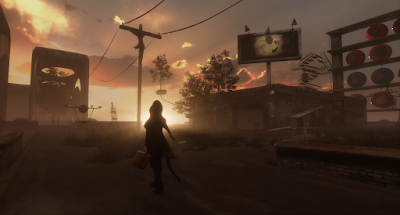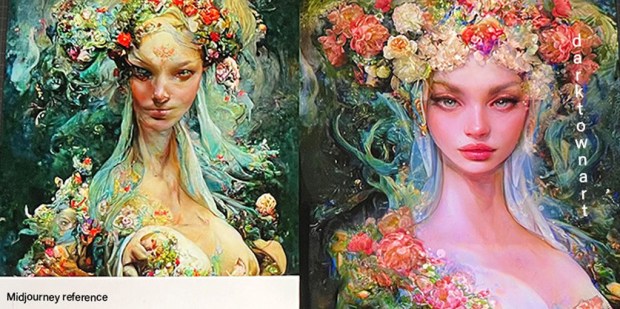The Cube Project
 One indicator of a struggling artist is to have a quick look at their painting palette. In many cases you will find it covered with every imaginable colour under the rainbow in an attempt to fix whatever problem is ailing them. It is their mistaken belief that the issue lies on the palette rather than in the artist. When I studied at the Ontario College of Art and Design there was a Professor who used an exercise that has helped me greatly over the course of my artistic life. In all other respects he was an arsehole, often telling struggling students they didn't belong in the College and that they should perhaps find employment cutting lawns or that their work was childlike at best. You have to remember that top art Colleges are full of the countries best and promising students who are accustomed to being the finest and most praised from kindergarten, public school and high school only to discover they have suddenly entered a place where they are average at best and the praise is not as ready as it once was. That is when they begin to dye their hair blue or wear capes and berets to try to stand out since their art no longer does anymore. I often found my Professor drinking at the Beverly, our local artists pub on Queen Street, and we would banter endlessly. He was a throwback Professor who was a practicing artist, which is not so much the case anymore, I actually really liked him. What he would have us do was reduce our palette to a mere three colours. For example just Burnt Sienna, Naples yellow and Cadmium Red. When you do this you are forced to understand the range and properties of the colours you are using. When you use a million colours you really know nothing about any of them. The Cube Project is a virtual version of this principle. We are turning away for a moment from the wonderful range of mesh or photoshopping beautiful textures to work instead on simple minimal compositions in black and white, over 20 regions. The overall idea is to create a massive harmonious environment rather than follow the standard exhibition practice of each artist having a clearly defined separate space to exhibit. And we must do this in a mere four days. The exhibit will live until just September 1st. The project itself is fairly unique in that 20 regions for two weeks would be $3000 us dollars, which is just not going to happen with your average rational person, so its scale is almost unmatched for a simply artistic endeavour.
One indicator of a struggling artist is to have a quick look at their painting palette. In many cases you will find it covered with every imaginable colour under the rainbow in an attempt to fix whatever problem is ailing them. It is their mistaken belief that the issue lies on the palette rather than in the artist. When I studied at the Ontario College of Art and Design there was a Professor who used an exercise that has helped me greatly over the course of my artistic life. In all other respects he was an arsehole, often telling struggling students they didn't belong in the College and that they should perhaps find employment cutting lawns or that their work was childlike at best. You have to remember that top art Colleges are full of the countries best and promising students who are accustomed to being the finest and most praised from kindergarten, public school and high school only to discover they have suddenly entered a place where they are average at best and the praise is not as ready as it once was. That is when they begin to dye their hair blue or wear capes and berets to try to stand out since their art no longer does anymore. I often found my Professor drinking at the Beverly, our local artists pub on Queen Street, and we would banter endlessly. He was a throwback Professor who was a practicing artist, which is not so much the case anymore, I actually really liked him. What he would have us do was reduce our palette to a mere three colours. For example just Burnt Sienna, Naples yellow and Cadmium Red. When you do this you are forced to understand the range and properties of the colours you are using. When you use a million colours you really know nothing about any of them. The Cube Project is a virtual version of this principle. We are turning away for a moment from the wonderful range of mesh or photoshopping beautiful textures to work instead on simple minimal compositions in black and white, over 20 regions. The overall idea is to create a massive harmonious environment rather than follow the standard exhibition practice of each artist having a clearly defined separate space to exhibit. And we must do this in a mere four days. The exhibit will live until just September 1st. The project itself is fairly unique in that 20 regions for two weeks would be $3000 us dollars, which is just not going to happen with your average rational person, so its scale is almost unmatched for a simply artistic endeavour.
The Cube Project is a collaborative artwork consisting of virtual
artists Bryn Oh, Cajska Carlsson, Charlotte Bartlett, Dancoyote Antonelli, Giovanna
Cerise, Haveit Neox, Kicca Igaly, L1Aura
Loire, London Junkers, Maya Paris, Misprint
Thursday, Nessuno Myoo, Oberon Onmura, PatriciaAnne Daviau, Pol Jarvinen, Rag
Randt, Rowan Derryth, Sea Mizin, Secret Rage, Solkide Auer, Remington Aries,
Solo Mornington, Tony Resident, Werner Kurosawa and Xineohp
Guisse.
The Cube Project uses a variety of windlights so Firestorm viewer is suggested.



Comments
Claiming this installation costs $3,000 is insulting to those who actually pay real cash for tier.
LEA gets free tier on 20 sims -- all the time, every day for more than year if my memory serves. The opportunity you have is well beyond this imaginary $3,000 two week window, isn't it?
Am I angry about that? Well, kind of yes. As someone who put my personal cash into an art sim for a long time I have very mixed feelings about the gift LEA has been given.
I promised a dear friend I would keep my feelings about the LEA to myself. A promise I have now broken so again, my apologies. If you or anyone else wants to talk about the LEA and what it means -- both good and bad - for support of the Arts in Second Life, I am happy to have that discussion in private.
I wonder if that would work with fledgling writers as well. But for them, what if certain words and phrases were banned? Just as the artist is forced back to make do with fewer colors, the writer would be forced to find other words and phrases and terms.
Ironically, my painting prof later on loved my work - and he had been a student of the original colour theory master, Josef Albers, at Cooper Union. So no, I wasn't blind after all :-D
Thanks for curating this project, it was very cool.